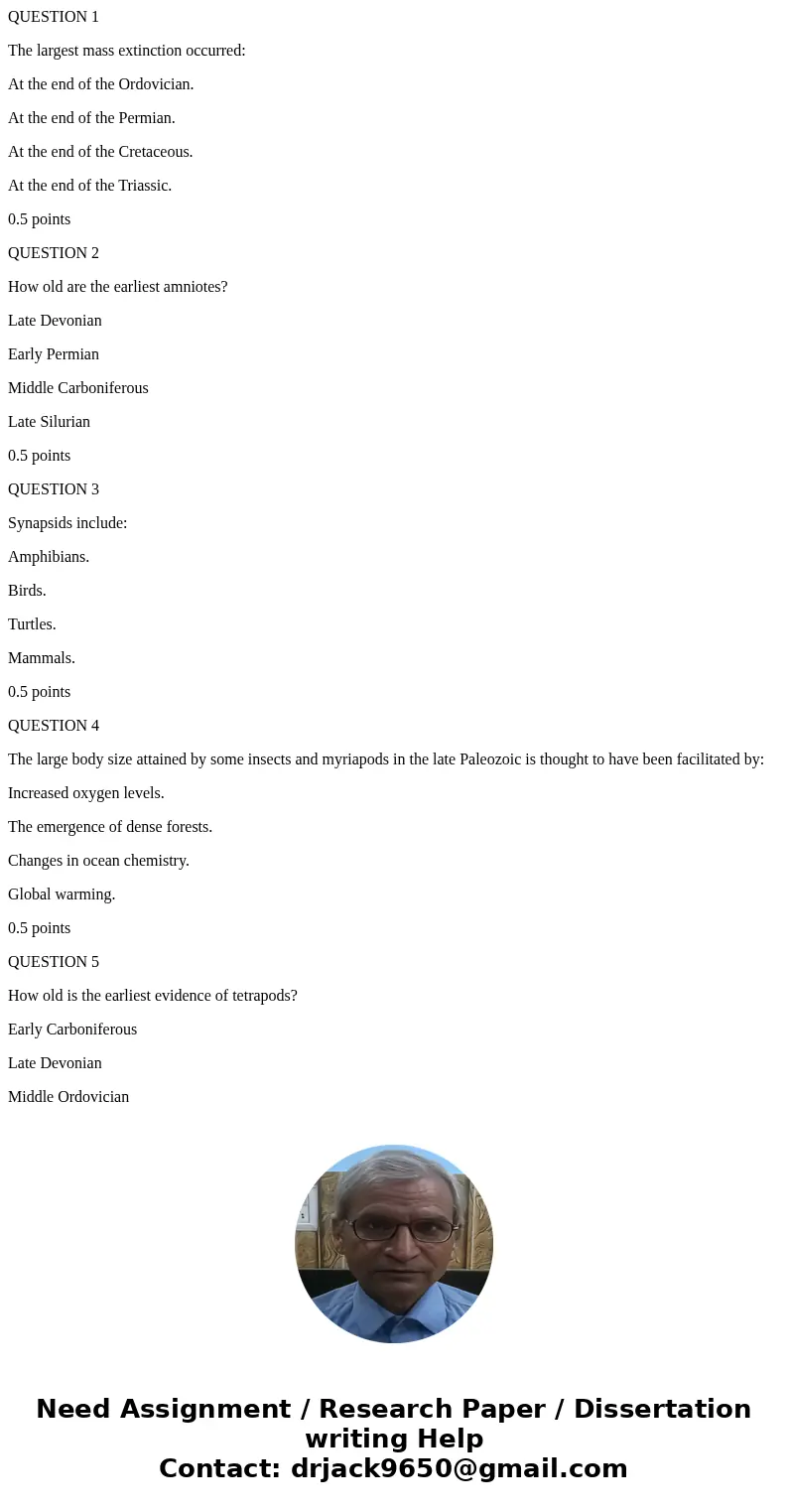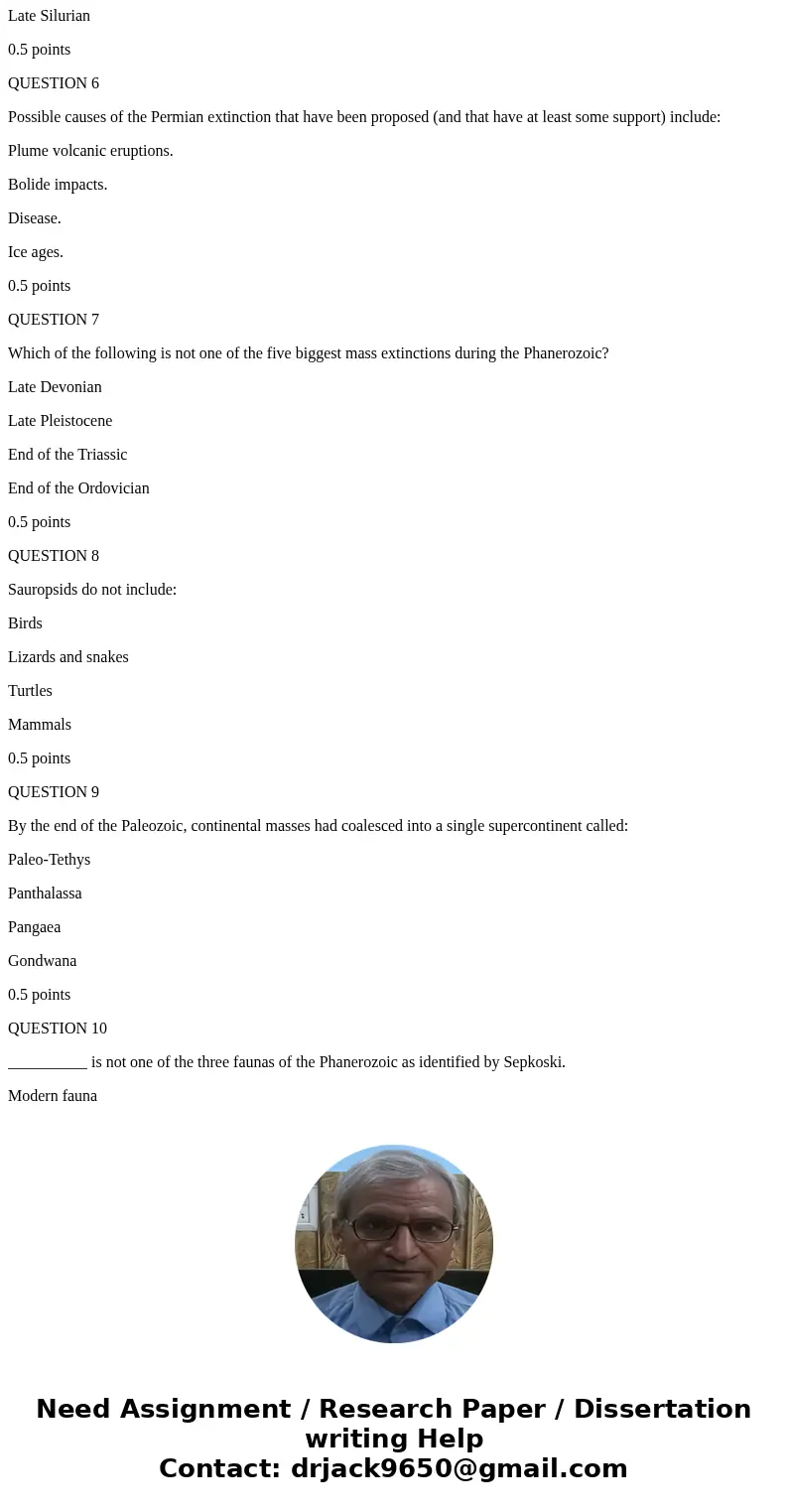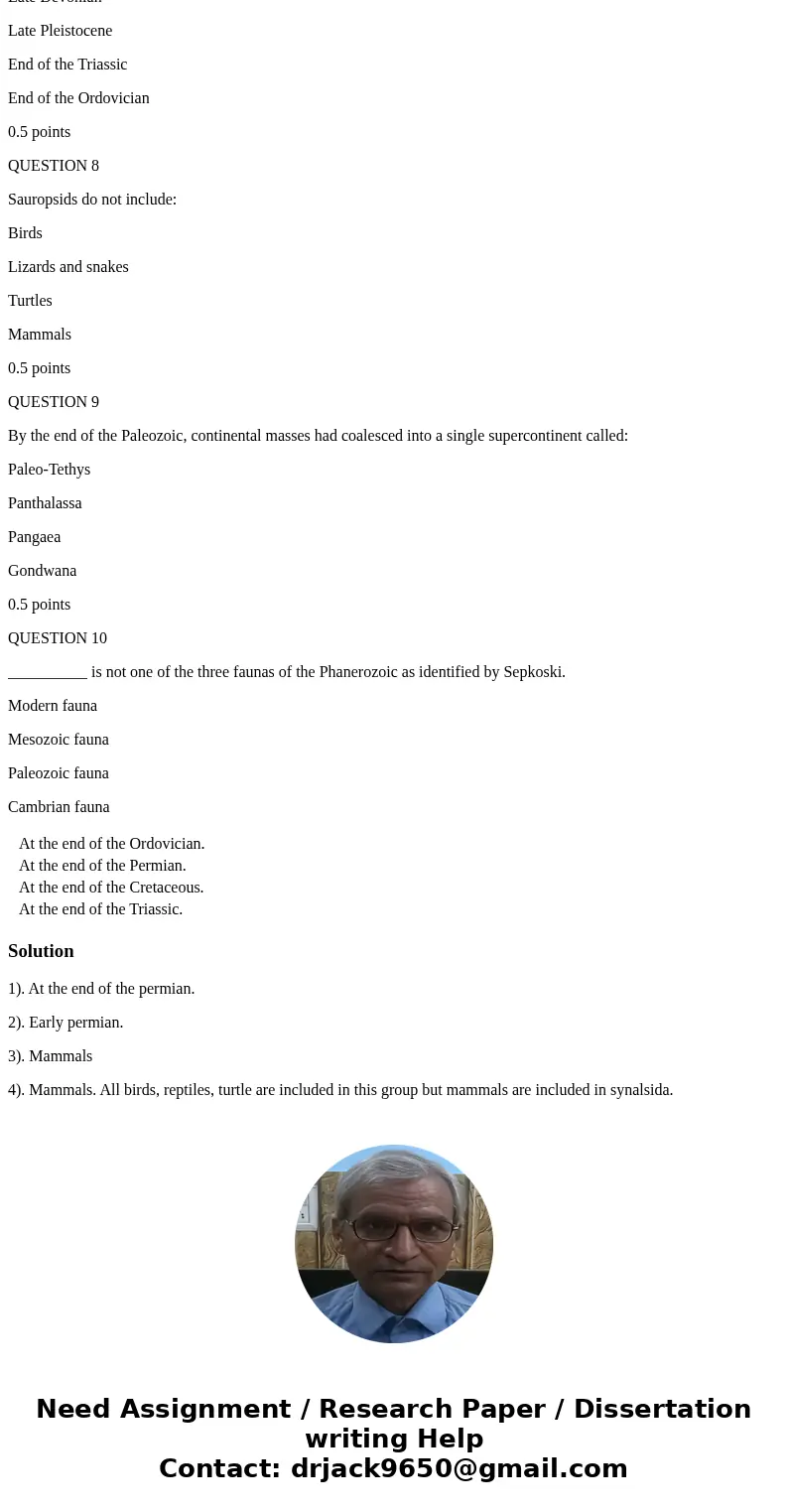QUESTION 1 The largest mass extinction occurred At the end o
QUESTION 1
The largest mass extinction occurred:
At the end of the Ordovician.
At the end of the Permian.
At the end of the Cretaceous.
At the end of the Triassic.
0.5 points
QUESTION 2
How old are the earliest amniotes?
Late Devonian
Early Permian
Middle Carboniferous
Late Silurian
0.5 points
QUESTION 3
Synapsids include:
Amphibians.
Birds.
Turtles.
Mammals.
0.5 points
QUESTION 4
The large body size attained by some insects and myriapods in the late Paleozoic is thought to have been facilitated by:
Increased oxygen levels.
The emergence of dense forests.
Changes in ocean chemistry.
Global warming.
0.5 points
QUESTION 5
How old is the earliest evidence of tetrapods?
Early Carboniferous
Late Devonian
Middle Ordovician
Late Silurian
0.5 points
QUESTION 6
Possible causes of the Permian extinction that have been proposed (and that have at least some support) include:
Plume volcanic eruptions.
Bolide impacts.
Disease.
Ice ages.
0.5 points
QUESTION 7
Which of the following is not one of the five biggest mass extinctions during the Phanerozoic?
Late Devonian
Late Pleistocene
End of the Triassic
End of the Ordovician
0.5 points
QUESTION 8
Sauropsids do not include:
Birds
Lizards and snakes
Turtles
Mammals
0.5 points
QUESTION 9
By the end of the Paleozoic, continental masses had coalesced into a single supercontinent called:
Paleo-Tethys
Panthalassa
Pangaea
Gondwana
0.5 points
QUESTION 10
__________ is not one of the three faunas of the Phanerozoic as identified by Sepkoski.
Modern fauna
Mesozoic fauna
Paleozoic fauna
Cambrian fauna
| At the end of the Ordovician. | ||
| At the end of the Permian. | ||
| At the end of the Cretaceous. | ||
| At the end of the Triassic. |
Solution
1). At the end of the permian.
2). Early permian.
3). Mammals
4). Mammals. All birds, reptiles, turtle are included in this group but mammals are included in synalsida.



 Homework Sourse
Homework Sourse